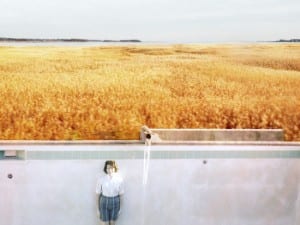FOAM, Amsterdam, closes this year’s exhibition programme with a retrospective of André Kertész and his extensive contribution to the visual language of 20th century photography. Examining the poeticism of his early career works in Hungary, the ten years spent in Paris as a leading face of Avant Garde photography and the proceeding 50 years spent living in New York, Mirroring Life explores the artist’s unique capacity to create unusual compositions and evoke new perspectives. His career proves to be the exception to his own musing that “everybody can look but not necessarily see.”
In contrast to his Parisian contemporaries, Kertész worked as an anonymous social observer. Discretely capturing the surrounding every day, his photographs reinvent streets, windows and passers-by through unconventional arrangements. In the later period of his life, his practice had an increased international gaze, both in subject matter and critical acclaim. Exhibiting in the Venice Photography Biennial and MoMA during the 1960s only served to perpetuate the ambitious landscape of his lens. As the artist notes: “I am forever a beginner who discovers the world again and again.”
His imaginative reconfigurations of the mundane navigate more than 200 photographs, chronologically documenting a 70 year career. The selected works include a large collection of black and white images– those of which his most known for, alongside a choice number of coloured prints. The featured pieces pay homage to a man whose playful compositions have become an influence for generations of successors. With artists such as Henri Cartier-Bresson claiming his mentorship, it is clear why this resurgence of interest in “the father of photojournalism” is necessary for contemporary audiences.
Mirroring Life by André Kertész can be seen from 15 September at Foam Amsterdam. www.foam.org
Credits:
1. André Kertész, Nageur sous l’eau, Esztergom, Hongrie, 1917 © André Kertész.




